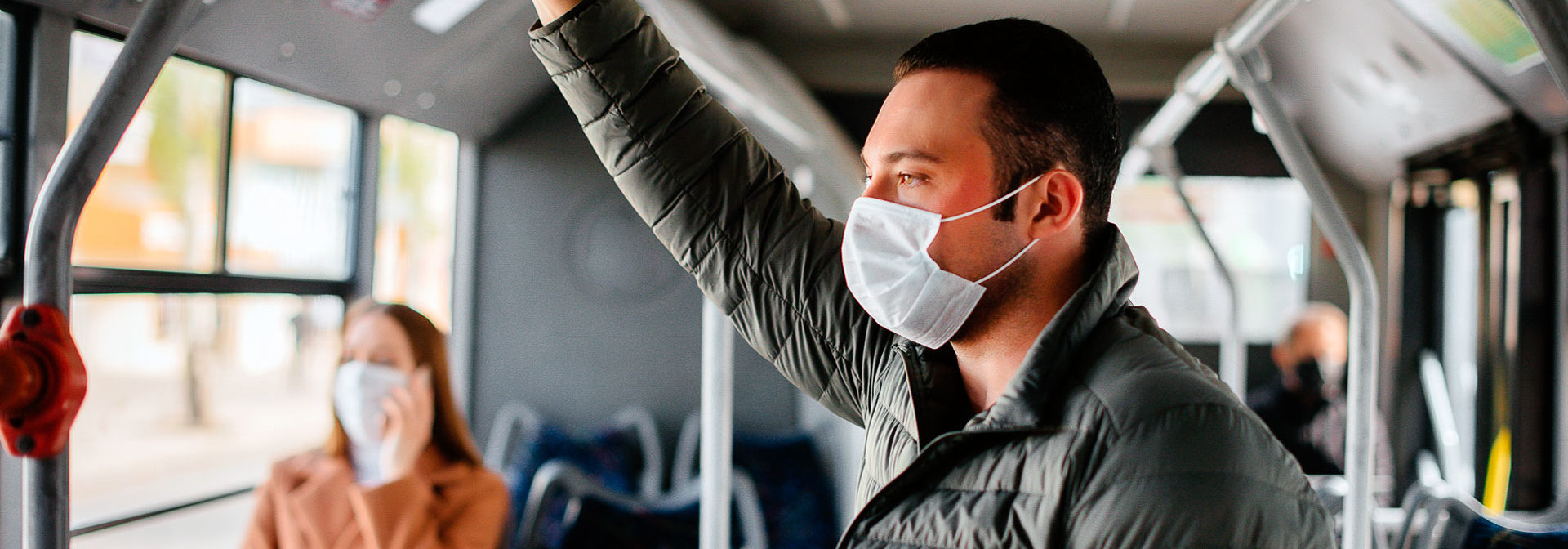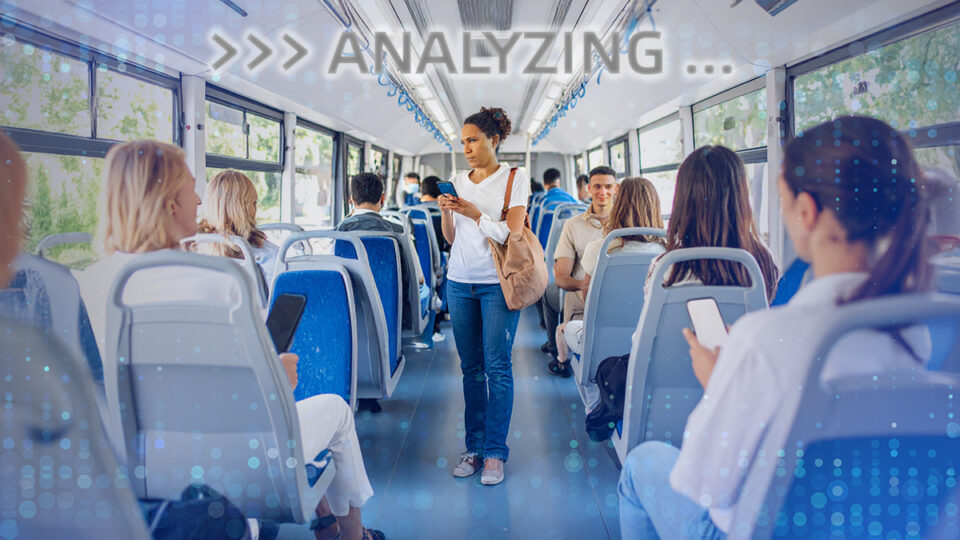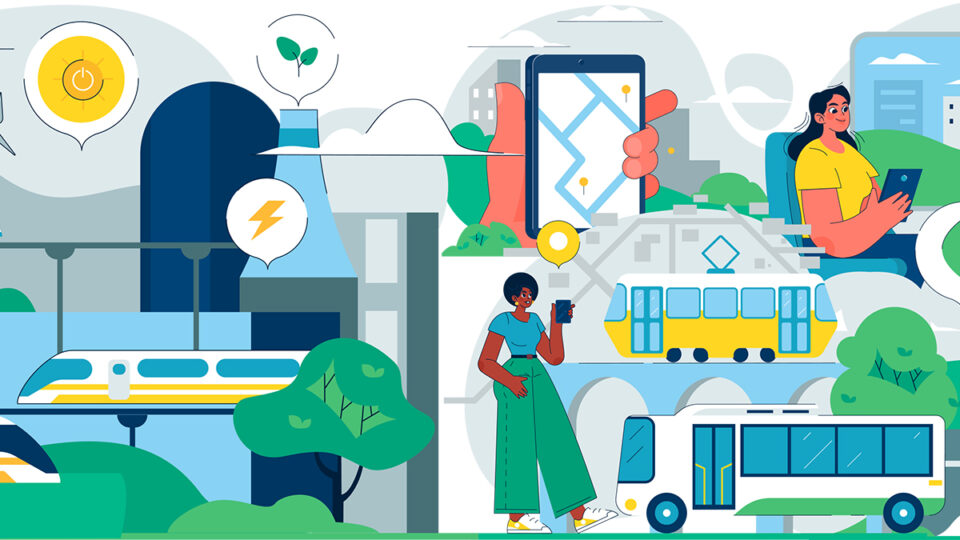
The tools to restoring ridership in a post-pandemic world
The COVID-19 pandemic has caused a massive drop in ridership and as a result, public transport operators are struggling. While there likely is no going back exactly to how things were in the past, getting back to a thriving level of ridership is absolutely doable. It will require re-establishing a new kind of relationship and level of trust with the riders, this correspondingly requires new means of outward communication. As we see it, situational awareness software solutions can be used as precision tools to re-building the relationship between the transit agencies and ridership.
When it comes to travel, surprises are usually an unwanted element; people want and expect predictability, especially during a pandemic. In an ideal situation, passengers know in advance if the station they are heading to is not crowded with people, and the train car they plan to step into is not packed to the brim. Providing the ridership with key data including timely occupancy information can help them make better decisions about what time to arrive at the station and which car to take, and this is the type of information that our modern situational awareness solutions can help facilitate.
Passengers still want to be confident that they will be able to depart and arrive on time, but health and safety is the foremost concern at the moment. This is an immediate concern that transit agencies have to address. To re-attract ridership, transit agencies will need to actively promote their own safety and security policies to restore confidence and trust about how the agency is handling the pandemic. Indoor, outdoor, and on-board TFT LCD displays can be equipped with scheduled PSAs, live health reports, and safety and hygiene instructions for riders, and real-time data can be presented in intuitive graphics that allow for riders to make informed decisions regarding the trains and buses they should take.
The ideal would be to deliver a door to door experience to the passenger, so they can be efficient, safe, and more comfortable about going back to leveraging public transportation.
Sometime in the future, we hope to see operators adopting solutions akin to what popular location-based map services offer, where riders are able to check and visually inspect congestion levels at stations and cars via different live data sources including images provided by cameras and sensors. The ideal would be to deliver a door to door experience to the passenger, so they can be efficient, safe, and more comfortable about going back to leveraging public transportation. Going forward, the passenger experience is going to have to continue to be richer and richer.
Harnessing occupancy data to boost confidence
In the past, transit agencies have not had the ability to access real-time data, only more general trends analysis, which has not been able to provide accurate information about, for example, how packed a train car is. In many cases, headcounts are still done manually. With modern situational awareness technologies, it is possible to gather real-time information by collecting data from emerging new detection technologies, such as video analytics, thermal Imaging, facial covering detection, people counting, and proximity sensors and weight sensors on train cars, which allows for estimating the passenger load. This data can be processed and visualized on passenger information display systems and mobile apps in a way that provides the ridership more transparency and control over their passenger experience.
Enhancing the passenger experience with big data
In many cases, operators have capable technologies already in place. This is where our expertise comes in. Teleste’s S-VMX software allows an unlimited number of cameras, data inputs, and subsystems all under the one umbrella while supporting thousands of video streams from a variety of sources such as CCTV, smartphones, tablets, body cameras, and vehicles.
We provide a holistic turnkey communications and visualization system and when needed we are able to push that out to other data platforms that agencies may have and broker that information. Basically, everyone provides their data and we assemble it and then present it back to them in ways that enable them to operate more efficiently and cost-effectively. Newer vehicles already come pre-installed with this type of data gathering technology, such as sensors, but older vehicles would have to be retrofitted, which creates new challenges in terms of logistics and funding. In many cases rolling out and deploying new technology and hardware is not a financially viable option in the current climate where funding is held up by low ridership.
Building on top of existing infrastructure for immediate deployment
So, we at Teleste are looking at efficient methods to get that data through existing systems. We can provide situational awareness solutions leveraging existing video surveillance and information display systems and with the help of wireless cell providers, it is something that can be deployed efficiently and rapidly to address the immediate need to restore ridership.
A key benefit is that our software can be built around existing infrastructure and it can be customized and configured to work with existing management platforms, so nothing has to be built from the ground up. We can have a system up and running within a few days, after which it is ready to deliver data that can be combined with existing data sources. Everything can be tailored to the specific needs of the customer. There is no need to invest in a massive enterprise platform, which can take six months to a year for some agencies to procure and deploy. We aim to flexibly provide the necessary tools agencies immediately need in order to be able to help get that ridership back.
Accepting and embracing change
Going into 2021 the world is a different place and there is no reverting back to our old ways. The new normal in public transit requires a new level of communication and information dissemination. Operators are currently beholden to mandated restrictions that they are unable to influence, so we want to facilitate them to take control of their own destiny in a way that restores ridership in a safe and smart way.
Read more about our situational awareness solution.
Mike O’Dea



